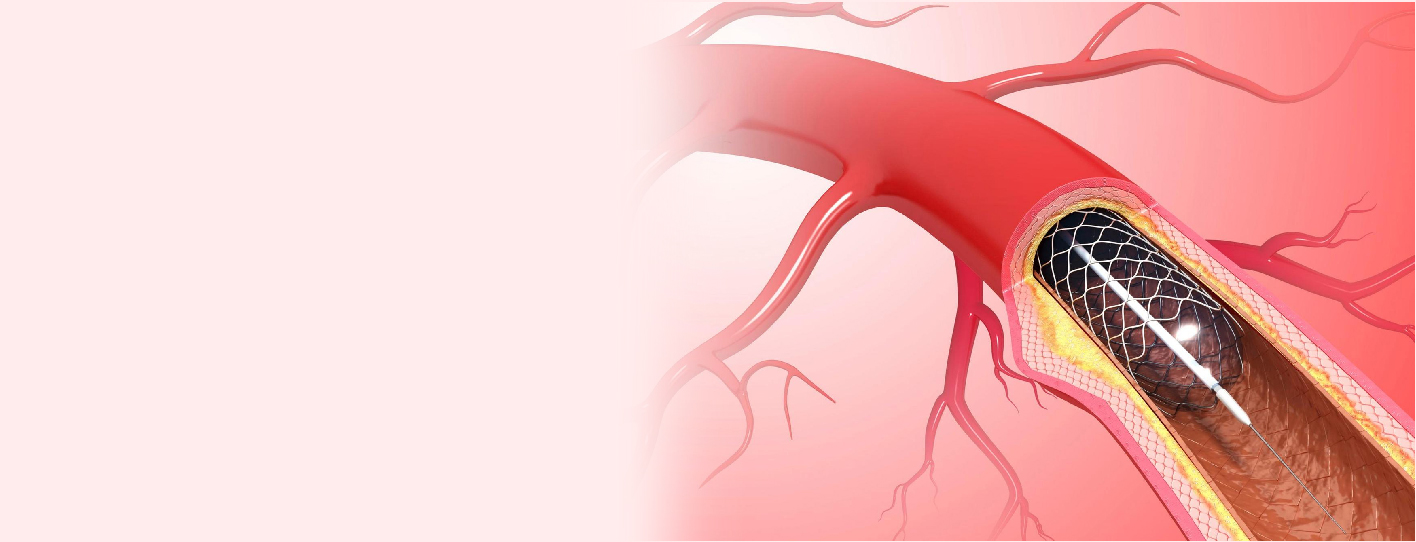



The type of stent for you is chosen by your cardiologist based on the severity of your blockage, your age, your medical history, and other factors. There are three types of stents used for angioplasty procedures. They are:
Before starting the angioplasty procedure, your doctor will give you anesthesia to reduce pain and control anxiety. To prevent the formation of blood clots, your doctor may also recommend some blood thinning medicines.
During the procedure, you will be lying on a padded table and you will be awake during the procedure. Your doctor will insert a catheter into an artery, the catheter may be inserted into your arm, wrist, or groin area.
Your healthcare provider will use x-ray pictures to carefully guide the catheter up into your heart and arteries. A special dye is injected into your body to highlight the blood flow through the arteries. This helps the healthcare provider to detect any blockages in the blood vessels supplying to your heart.
Into and across the blockage, a guide wire is moved. Then a balloon catheter is pushed over the guide wire and into the blockage. The balloon on the end is blown up (inflated). This opens the blocked vessel and restores proper blood flow to the heart.
A stent is then placed into the blocked area, stent is inserted along with the balloon catheter. The stent is left over there to keep the artery open.
The type of stent for you is chosen by your cardiologist based on the severity of your blockage, your age, your medical history, and other factors. Depending on these factors as well as the complexity of the procedure, angioplasty stent cost varies. On average, coronary angioplasty stents range from INR 7000 to INR 12000. The final cost is the total of the angioplasty procedure cost and stent cost along with the hospital charges, investigational tests, and medicine charges. The total cost varies if you have any insurance coverage.
The risks include:
The recovery time for angioplasty and stent placement varies for different individuals. In general, though, it usually takes around four weeks before you can resume normal activities and start feeling better.
Along with proper care, it is essential to follow a healthy lifestyle instructed by your healthcare provider to reduce the risk of blockages and improve overall outcomes. This includes quitting smoking, eating a healthy and balanced diet, or exercising regularly. Discuss in detail with your cardiologist to get specific instructions on what you should do after the procedure and provide any necessary follow-up care.
Angioplasty and stent insertion is the procedure used to widen or open the narrowed or blocked blood vessels. It is an effective treatment for coronary artery disease and can help reduce the symptoms associated with it and improve the life span. By understanding in detail all your options, consulting an experienced cardiologist, and following healthy lifestyle recommendations, you can make sure that you are taking the best steps possible towards improving your cardiac health outcomes.
Q1. How much does a heart stent cost?
A: The stent price varies depending on the type of stent used and the complexity of the procedure. On average, the price of a single heart stent varies from INR 7000 to INR 12000. The final cost depends upon the number of stents used, angioplasty charges, hospital charges, and medication charges.
Q2. Why does the angioplasty stent cost so much?
A: The manufacturing of stents needs advanced technologies and specialized materials. The high manufacturing cost results in a higher price for consumers.
Q3. Do insurance companies pay angioplasty stent costs?
A: Angioplasty can be a financial burden to many people. Many insurance companies pay the full or partial amount needed for medical procedures. It is recommended you check with your insurance provider whether your existing plan covers the angioplasty charges.
From Recent Advancements in Heart Care to Tips and Tricks to make your Heart Healthy Again, stay updated with reliable and informative blogs by our experts.